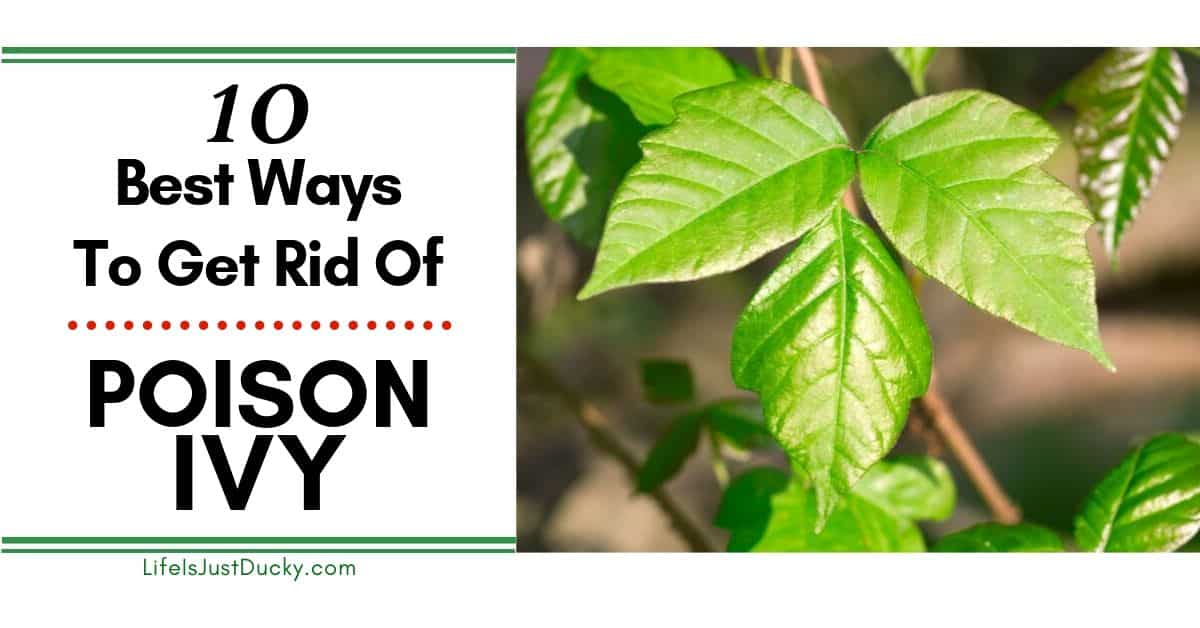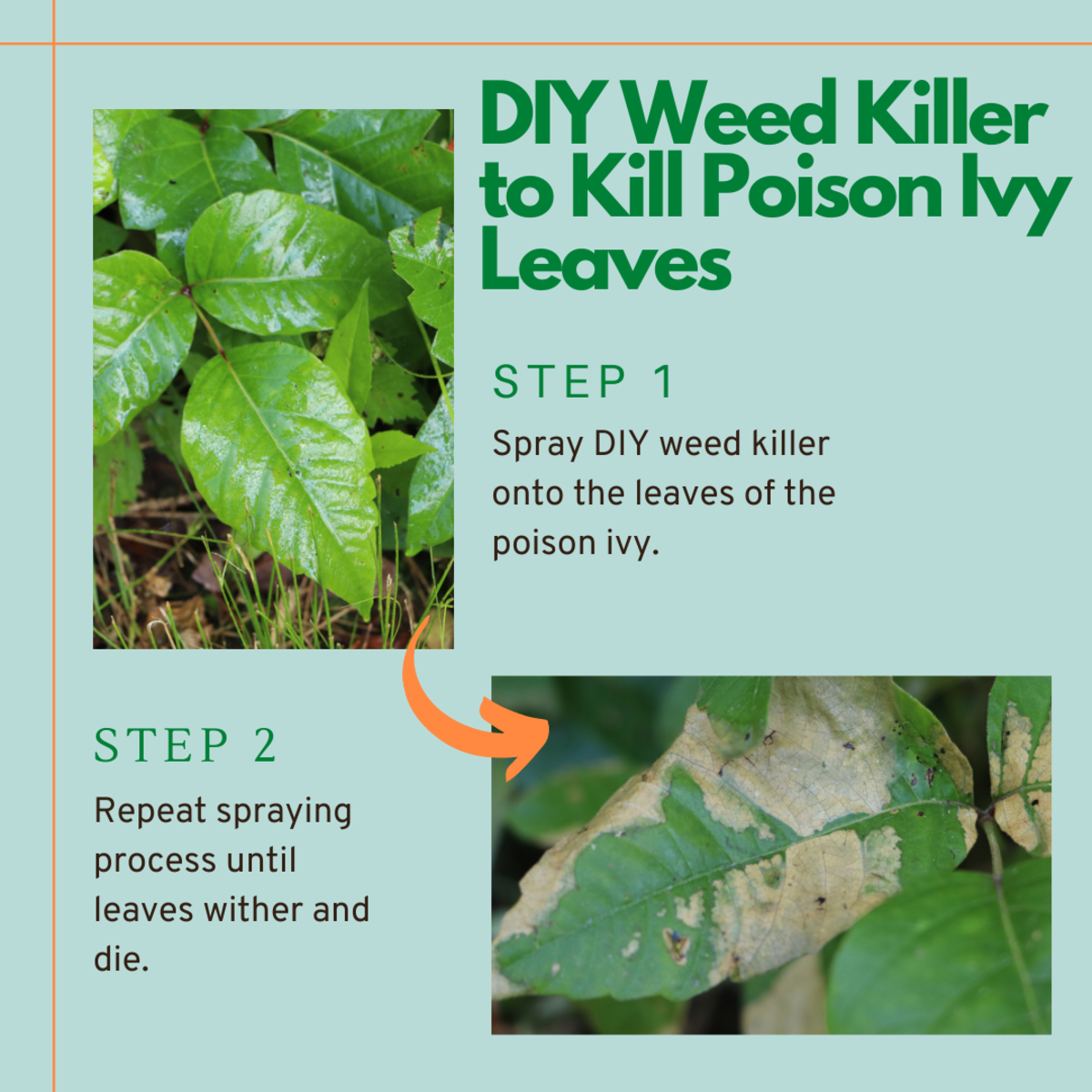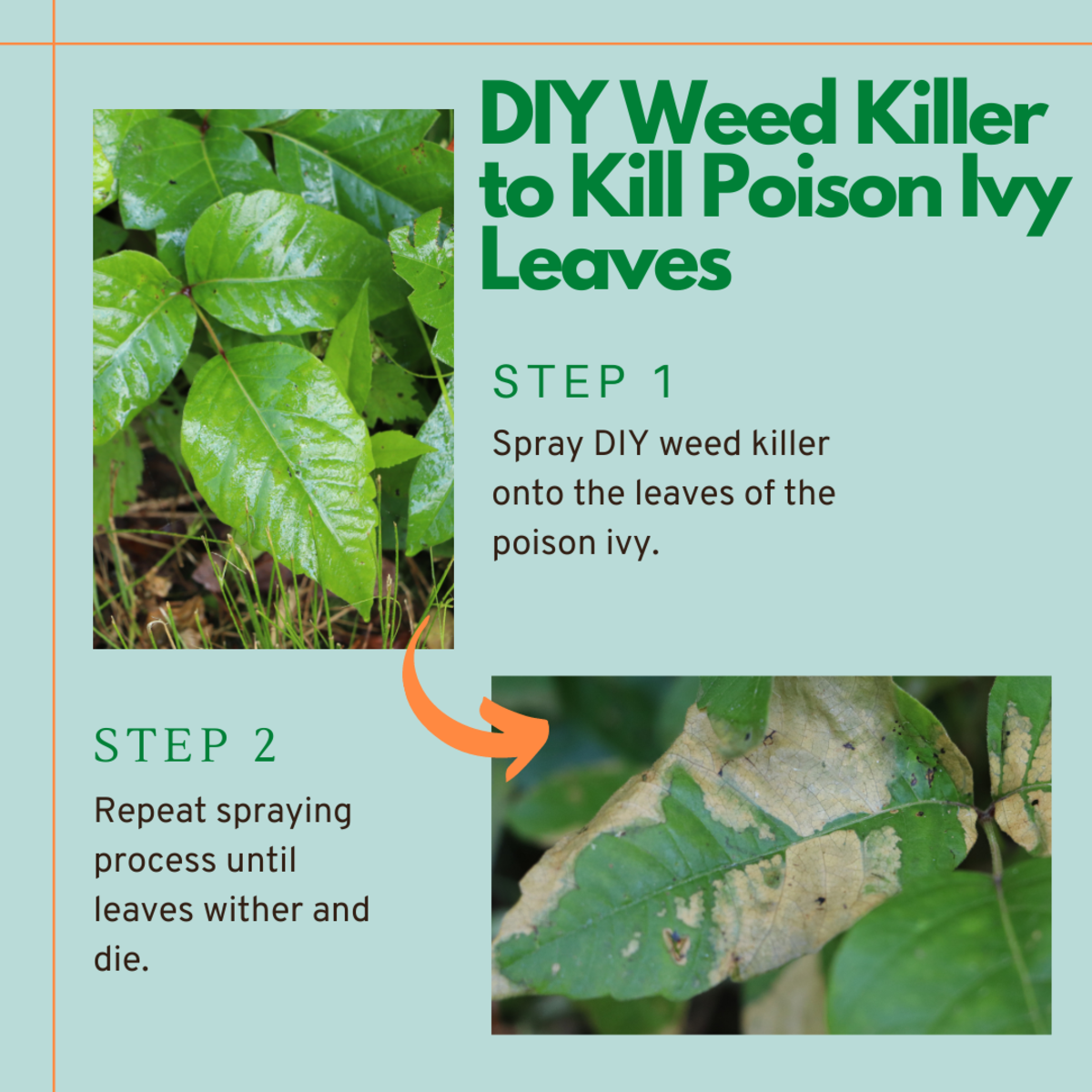How to Eliminate Poison Ivy While Maintaining Healthy Plants is a common concern for gardeners and homeowners alike. This pesky plant, known for its itchy rash-inducing oil, can quickly take over a garden, threatening the health of other plants and the enjoyment of outdoor spaces.
But don’t despair! There are effective and safe methods for removing poison ivy without harming your other plants or putting yourself at risk. This guide will equip you with the knowledge and strategies to eradicate this invasive species while ensuring your garden flourishes.
From understanding the characteristics of poison ivy and its spread to implementing safe removal techniques, this comprehensive guide will provide you with the tools to confidently manage this challenging weed. We will explore both traditional and natural methods, including hand-pulling, herbicides, and organic approaches.
Additionally, we will discuss preventive measures to avoid future infestations and offer tips for managing exposure should you encounter this troublesome plant.
Understanding Poison Ivy

Poison ivy is a common plant that can cause a painful and itchy rash in many people. It is important to be able to identify poison ivy and take precautions to avoid contact with it.
Identifying Poison Ivy
Poison ivy is easily recognizable by its three leaflets. The leaflets are typically oval-shaped with pointed tips and have smooth edges. The center leaflet has a longer stalk than the other two leaflets. The leaves can be green, red, or yellow depending on the season.
Poison ivy stems are typically hairy and can be either green or reddish-brown. The plant can grow as a vine, a shrub, or a groundcover.
The Allergic Reaction
The allergic reaction to poison ivy is caused by a chemical compound called urushiol. Urushiol is a colorless oil found in all parts of the poison ivy plant, including the leaves, stems, roots, and berries. When urushiol comes into contact with the skin, it can cause an allergic reaction in many people.
Urushiol can remain active for several months, even after the plant has died. It can also be spread by contact with contaminated clothing, tools, or pets.
How Poison Ivy Spreads
Poison ivy can spread through several methods:
- Direct Contact with the Plant:The most common way to get poison ivy is by directly touching the plant. This can happen when brushing against the plant, walking through an area where it grows, or even simply being near it.
- Contaminated Clothing:Urushiol can easily transfer from the plant to clothing, and then to your skin. If you have been in contact with poison ivy, it is important to wash your clothes immediately in hot water and detergent.
- Pets:Pets can also spread urushiol. If your pet has been in contact with poison ivy, they can transfer the oil to you through their fur.
Safe and Effective Removal Methods
Eradicating poison ivy requires a strategic approach that balances effectiveness with safety. Choosing the right method depends on the severity of the infestation, your comfort level with different techniques, and your desired level of environmental impact.
Hand-Pulling, How to Eliminate Poison Ivy While Maintaining Healthy Plants
Hand-pulling is a manual method for removing poison ivy plants, and it is often the most environmentally friendly option. It involves physically removing the plants from the ground, including the roots. This method is most effective for small infestations and young plants, but it can be time-consuming and labor-intensive.
- Effectiveness:Hand-pulling is most effective for small infestations and young plants. It is less effective for large infestations or mature plants with extensive root systems.
- Risks:The primary risk associated with hand-pulling is exposure to the plant’s oils, which can cause an allergic reaction. Always wear protective clothing and gloves when handling poison ivy.
- Tips for Safe Handling:
- Wear long sleeves, long pants, gloves, and closed-toe shoes.
- Avoid touching your face or eyes while handling poison ivy.
- Wash your hands, clothes, and tools thoroughly with soap and water after handling poison ivy.
- Dispose of the plants properly in a sealed plastic bag or burn them in a controlled fire.
Using Herbicides
Herbicides are chemical substances that kill plants. They can be effective for controlling poison ivy, but they can also harm other plants and wildlife. It is important to choose herbicides that are specifically labeled for poison ivy control and to follow the manufacturer’s instructions carefully.
- Effectiveness:Herbicides are effective for controlling poison ivy, even large infestations. They work by interfering with the plant’s growth processes.
- Risks:Herbicides can be harmful to humans, animals, and the environment. They can contaminate water sources, kill beneficial insects, and harm non-target plants.
- Tips for Safe Handling:
- Wear protective clothing, including gloves, goggles, and a mask.
- Apply herbicides on a windless day to minimize drift.
- Avoid spraying herbicides near water sources, food crops, or areas where children and pets play.
- Dispose of herbicides properly according to the manufacturer’s instructions.
Applying Natural Remedies
Natural remedies can be effective for controlling poison ivy, but they may not be as effective as herbicides. Some natural remedies include vinegar, salt, and boiling water. These methods can damage the plant, but they may not kill the roots.
- Effectiveness:Natural remedies can be effective for controlling poison ivy, but they may not be as effective as herbicides. They can damage the plant, but they may not kill the roots.
- Risks:Natural remedies can be harmful to humans, animals, and the environment. Vinegar, salt, and boiling water can damage soil and harm beneficial insects.
- Tips for Safe Handling:
- Wear protective clothing, including gloves, goggles, and a mask.
- Avoid applying natural remedies near water sources, food crops, or areas where children and pets play.
- Dispose of natural remedies properly according to the manufacturer’s instructions.
Maintaining Healthy Plants
While eliminating poison ivy is crucial, it’s equally important to maintain the health of your other plants. This involves a two-pronged approach: ensuring you’re not removing beneficial plants by mistake and creating a garden environment that discourages poison ivy growth.
Proper Plant Identification
Misidentifying plants can lead to the accidental removal of beneficial species, disrupting the ecosystem and potentially harming your garden. Therefore, accurate identification is essential before undertaking any removal efforts.
Eliminating poison ivy without harming your garden’s other plants requires a delicate touch. You can’t simply douse the area with harsh chemicals, as this could harm your valuable flora. A more targeted approach is needed, such as using a non-toxic herbicide that specifically targets poison ivy.
By taking these precautions, you can eradicate the pesky plant without jeopardizing the health of your beloved garden.
- Consult reliable resources: Utilize field guides, online databases, or contact local experts for accurate identification.
- Observe plant characteristics: Pay close attention to leaf shape, stem structure, flower color, and growth patterns to distinguish poison ivy from other plants.
- Consider the surrounding environment: Poison ivy thrives in disturbed areas, so its presence may indicate soil compaction or nutrient deficiencies.
Creating a Healthy Garden Environment
A healthy garden environment can naturally suppress poison ivy growth. By implementing the following practices, you can create a less hospitable environment for this invasive plant.
Soil Management
Soil health plays a crucial role in plant growth, and poison ivy is no exception. Optimizing soil conditions can help discourage its growth.
- Maintain good soil drainage: Poison ivy prefers moist, poorly drained areas. Improve drainage by adding organic matter, such as compost, and ensuring proper slope for water runoff.
- Adjust soil pH: Poison ivy thrives in slightly acidic soil. Raising the pH by adding lime can make the soil less hospitable.
- Improve soil fertility: Adding organic matter and nutrients to the soil can promote the growth of other plants, effectively competing with poison ivy for resources.
Plant Spacing
Proper plant spacing is crucial for healthy plant growth and preventing the spread of invasive species.
Eliminating poison ivy while preserving healthy plants often involves a careful balance between effective removal and minimizing damage to surrounding vegetation. Similar to preventing gnats from infesting your plants, understanding the conditions that attract these pests is key. For poison ivy, this might mean identifying and removing the ideal conditions for its growth, such as excessive moisture or shade, while ensuring that healthy plants are not negatively impacted by the removal process.
- Minimize open spaces: Leave minimal gaps between desirable plants to reduce areas where poison ivy can take root.
- Choose appropriate plant companions: Select plants that are known to suppress poison ivy growth, such as garlic, lavender, and thyme.
- Monitor for new growth: Regularly inspect your garden for any signs of poison ivy emergence, particularly in areas with disturbed soil or open spaces.
Organic Weed Control
Organic methods for weed control can effectively manage poison ivy growth without harming beneficial plants or the environment.
- Mulching: Applying a layer of mulch, such as wood chips or shredded bark, around desirable plants can suppress weed growth by blocking sunlight and reducing soil moisture.
- Hand-weeding: Regularly remove poison ivy seedlings and mature plants before they can produce seeds. Use gloves and protective clothing to prevent contact with the plant.
- Smothering: Covering poison ivy patches with a thick layer of cardboard or plastic sheeting can block sunlight and prevent photosynthesis, eventually killing the plants.
Prevention and Control
Proactive measures are essential to prevent future poison ivy infestations and maintain a healthy garden environment. Regular inspections and early detection play a crucial role in minimizing the spread of this invasive plant.
Identifying High-Risk Areas
Poison ivy thrives in various environments, making it essential to identify common areas where it frequently grows. This knowledge helps gardeners implement targeted strategies to prevent and control its growth.
- Disturbed Areas:Poison ivy often colonizes disturbed areas such as construction sites, trails, and recently cleared land. The plant takes advantage of exposed soil and sunlight.
- Edges of Woods and Fields:The transition zone between wooded areas and open fields provides ideal conditions for poison ivy. This zone offers a balance of shade and sunlight, as well as ample access to nutrients.
- Along Fences and Walls:Poison ivy commonly grows along fences and walls, utilizing these structures for support and access to sunlight.
- Near Water Sources:Poison ivy can thrive near water sources, particularly in moist areas with ample sunlight.
Preventing Spread
Preventing the spread of poison ivy is crucial to maintain a healthy garden and avoid accidental exposure.
- Avoid Contact:Wear protective clothing, including long sleeves, pants, gloves, and boots, when working in areas where poison ivy may be present.
- Clean Tools and Equipment:After working in areas with poison ivy, thoroughly clean tools and equipment with soap and water to prevent the spread of urushiol, the oil that causes allergic reactions.
- Wash Clothing Separately:Wash clothing that has come into contact with poison ivy separately from other laundry items. Use hot water and detergent to effectively remove urushiol.
- Control Seed Spread:Poison ivy spreads through seeds, so control its growth before it produces seeds. Remove plants before they flower and produce berries.
Early Detection and Regular Inspections
Regular inspections and early detection are essential for controlling poison ivy. Early intervention significantly reduces the time and effort required for removal.
- Visual Inspections:Regularly inspect your property, particularly areas prone to poison ivy growth, for any signs of the plant. Pay attention to new growth and any changes in vegetation.
- Identify Poison Ivy:Familiarize yourself with the distinct features of poison ivy, including its three leaflets, shiny leaves, and hairy vines. This knowledge will help you identify and remove the plant effectively.
- Monitor High-Risk Areas:Focus your inspections on areas where poison ivy is known to grow, such as disturbed areas, edges of woods, and along fences.
Managing Exposure: How To Eliminate Poison Ivy While Maintaining Healthy Plants
Even with the best precautions, accidental contact with poison ivy is possible. Knowing how to manage exposure and treat any resulting rash is crucial for preventing complications and ensuring a swift recovery.
Symptoms and First-Aid
Poison ivy rash typically appears within 12 to 48 hours after exposure. It begins with itching, redness, and swelling, followed by the development of blisters. These blisters may ooze and crust over, causing further discomfort.
- Immediate Relief:
- Wash the affected area with soap and water:This helps remove any remaining urushiol oil, minimizing the severity of the rash.
- Apply a cold compress:This can reduce itching and inflammation.
- Consider over-the-counter medications:Antihistamines, such as diphenhydramine (Benadryl) or loratadine (Claritin), can help relieve itching. Hydrocortisone cream can also be applied to the affected area.
- Avoid scratching:Scratching can break the blisters and increase the risk of infection.
Seeking Medical Attention
While most cases of poison ivy rash resolve on their own within a few weeks, it is essential to seek medical attention if:
- The rash is severe or widespread:This may indicate a more serious allergic reaction.
- Symptoms worsen:If the rash becomes increasingly painful, itchy, or swollen, or if you develop a fever, you should see a doctor.
- The rash is near the eyes or genitals:These areas are more sensitive and require specialized treatment.
Preventing the Spread of Rash
Once you develop a poison ivy rash, it is important to prevent its spread to other parts of your body or to other people:
- Wash your hands thoroughly:This helps remove any remaining urushiol oil.
- Avoid scratching:Scratching can transfer urushiol to other areas of your body.
- Wash contaminated clothing:Urushiol can remain on clothing and spread the rash.
- Keep the rash covered:This can help prevent accidental contact and reduce the risk of spreading the rash.
Managing Discomfort
Poison ivy rash can be incredibly itchy and uncomfortable. Here are some strategies to manage discomfort:
- Keep the affected area cool and dry:Avoid using hot water or harsh soaps.
- Wear loose-fitting clothing:This helps prevent irritation and scratching.
- Avoid scratching:This can break the blisters and increase the risk of infection.
- Consider oatmeal baths:Oatmeal can soothe itchy skin.
Ultimate Conclusion

With the right knowledge and a bit of effort, you can successfully eliminate poison ivy from your garden while maintaining a thriving ecosystem. By combining safe removal techniques with preventative measures, you can protect yourself and your loved ones from the unpleasant effects of this plant while enjoying a healthy and beautiful outdoor space.
Remember, identifying poison ivy accurately and understanding its spread are crucial steps in preventing future infestations. By embracing a proactive approach, you can enjoy your garden free from the threat of poison ivy.
FAQ Guide
How long does it take for poison ivy to die after being treated with herbicide?
The time it takes for poison ivy to die after herbicide treatment varies depending on the type of herbicide used and the severity of the infestation. Generally, it can take several days to a couple of weeks for the plant to show signs of wilting and death.
Is it safe to burn poison ivy?
Burning poison ivy is not recommended as the smoke can contain urushiol oil, which can cause severe respiratory problems and skin irritation. It’s best to use other removal methods.
Can I compost poison ivy?
Composting poison ivy is not advisable as the oil can remain active in the compost and potentially cause allergic reactions when handling the compost.
How do I know if I have poison ivy?
Poison ivy typically has three leaflets, with the middle leaflet having a longer stem than the side leaflets. The leaves are often shiny and can have smooth or toothed edges. However, it’s best to err on the side of caution and avoid touching any plants you are unsure about.
